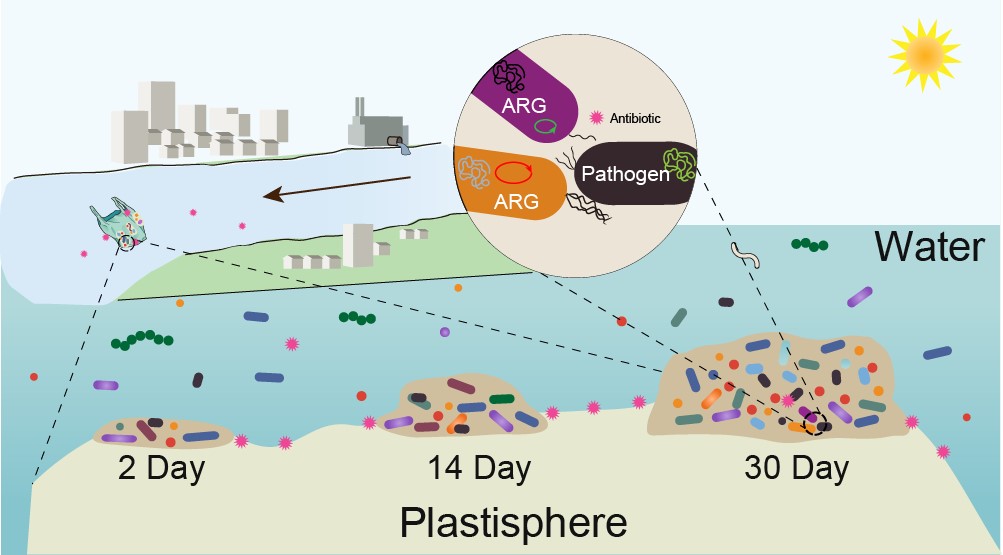Plastics have been used in a wide variety of products because of their malleability and durability properties and low cost. However, the intense consumption and disposal of plastic products are leading to rapid accumulation of plastic debris in the environment. In addition, plastic debris surfaces can be colonized by microorganisms to form biofilms, the so-called "plastisphere". With the rapidly increasing occurrence and dissemination of antibiotic resistance in the environment, plastics coming into contact with these ecosystems are inevitably contaminated with antibiotic resistance. Additionally, as a hydrophobic substrate, plastics can readily accumulate organic and inorganic pollutants in the environment, such as antibiotics, heavy metals, pesticides, and other persistent organic pollutants. These chemicals were expected to drive the selection/co-selection of antibiotic resistance, thus making plastics a specific and even favorable niche for the dissemination of antibiotic resistance. However, the development process of antibiotic resistome in the plastisphere is largely unknown, impeding risk assessment associated with plastics.
In a recent study, a research group led by Prof. ZHU Yong-Guan from Institute of Urban Environment, Chinese Academy of Sciences (IUE, CAS) have profiled the temporal dynamics of ARGs, mobile genetic elements (MGEs), and microbial composition in the plastisphere in an urban water body. The results showed that a total of 82 ARGs, 12 MGEs, and 63 bacterial pathogens were detected in the plastisphere. Five MGEs and six ARGs of them were persistently detected in the whole microbial colonization process, which was regarded as a major concern because of their potential role in disseminating antibiotic resistance. In addition to genomic analysis, the ecophysiology of plastisphere was interrogated by D2O-labeled single-cell Raman spectroscopy in a culture-independent way. The results demonstrated that the plastisphere was inherently more tolerant to antibiotics than bacterioplankton. Finally, by combining persistent MGEs, intensified colonization of pathogenic bacteria, increased tolerance to antibiotic, and potential trophic transfer into a holistic risk analysis, the plastisphere was indicated as a stage to acquire and spread antibiotic resistance and impose a long-term risk to ecosystems and human health. These findings provide important insights into the antibiotic resistome and ecological risk of the plastisphere and highlight the necessity for comprehensive surveillance of plastisphere.
The research was recently published in Environmental Science & Technology with title of "Temporal Dynamics of Antibiotic Resistome in the Plastisphere during Microbial Colonization".
This work was supported by National Natural Science Foundation of China, Chinese Academy of Sciences and Key Collaborative Research Program of the Alliance of International Science Organization.

Cartoon of the development process of antibiotic resistome in the plastisphere (Image by YANG Kai)